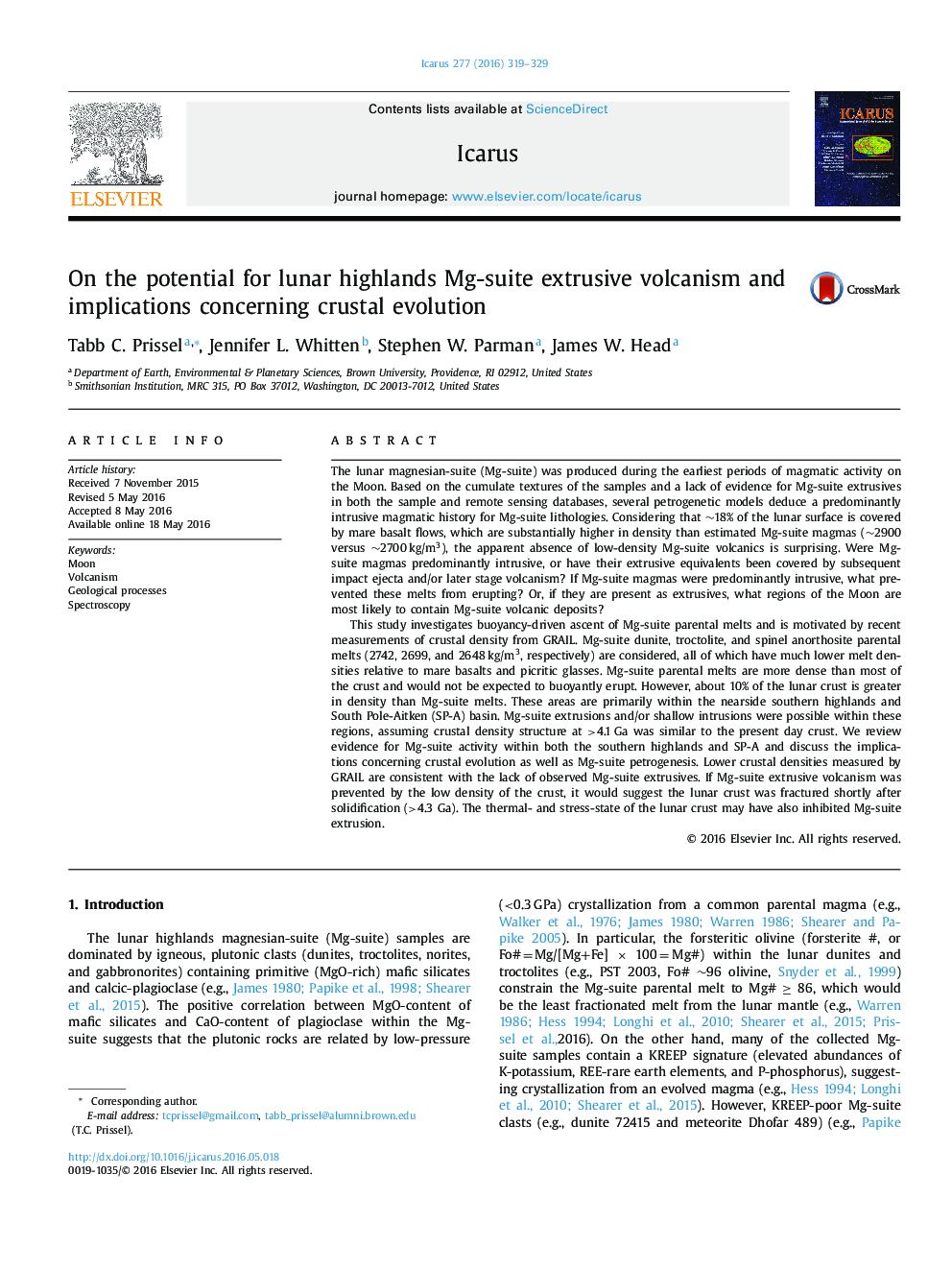| Article ID | Journal | Published Year | Pages | File Type |
|---|---|---|---|---|
| 8134947 | Icarus | 2016 | 11 Pages |
Abstract
This study investigates buoyancy-driven ascent of Mg-suite parental melts and is motivated by recent measurements of crustal density from GRAIL. Mg-suite dunite, troctolite, and spinel anorthosite parental melts (2742, 2699, and 2648Â kg/m3, respectively) are considered, all of which have much lower melt densities relative to mare basalts and picritic glasses. Mg-suite parental melts are more dense than most of the crust and would not be expected to buoyantly erupt. However, about 10% of the lunar crust is greater in density than Mg-suite melts. These areas are primarily within the nearside southern highlands and South Pole-Aitken (SP-A) basin. Mg-suite extrusions and/or shallow intrusions were possible within these regions, assuming crustal density structure at >4.1Â Ga was similar to the present day crust. We review evidence for Mg-suite activity within both the southern highlands and SP-A and discuss the implications concerning crustal evolution as well as Mg-suite petrogenesis. Lower crustal densities measured by GRAIL are consistent with the lack of observed Mg-suite extrusives. If Mg-suite extrusive volcanism was prevented by the low density of the crust, it would suggest the lunar crust was fractured shortly after solidification (>4.3 Ga). The thermal- and stress-state of the lunar crust may have also inhibited Mg-suite extrusion.
Related Topics
Physical Sciences and Engineering
Earth and Planetary Sciences
Space and Planetary Science
Authors
Tabb C. Prissel, Jennifer L. Whitten, Stephen W. Parman, James W. Head,
